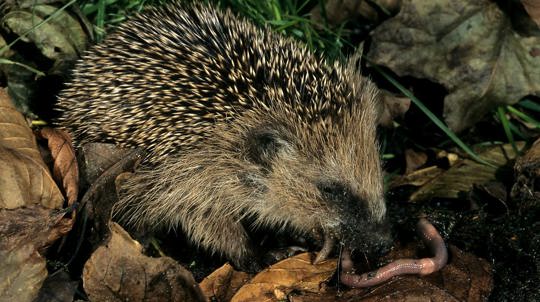
Credit: Age Fotostock / Alamy Stock Photo
What do foxes eat?
Foxes have a really diverse diet. They are expert hunters, catching rabbits, rodents, birds, frogs and earthworms as well as eating carrion. But they aren’t carnivorous - they are actually omnivores as they dine on berries and fruit too. Urban foxes will also scavenge for food in dustbins, and often catch pigeons and rats.
Fox cubs enter the world deaf, blind and dependent on their mother’s milk, much like domestic dog puppies. The cubs start eating solid food at around four weeks old and are usually completely weaned by the time they are 12 weeks of age.










